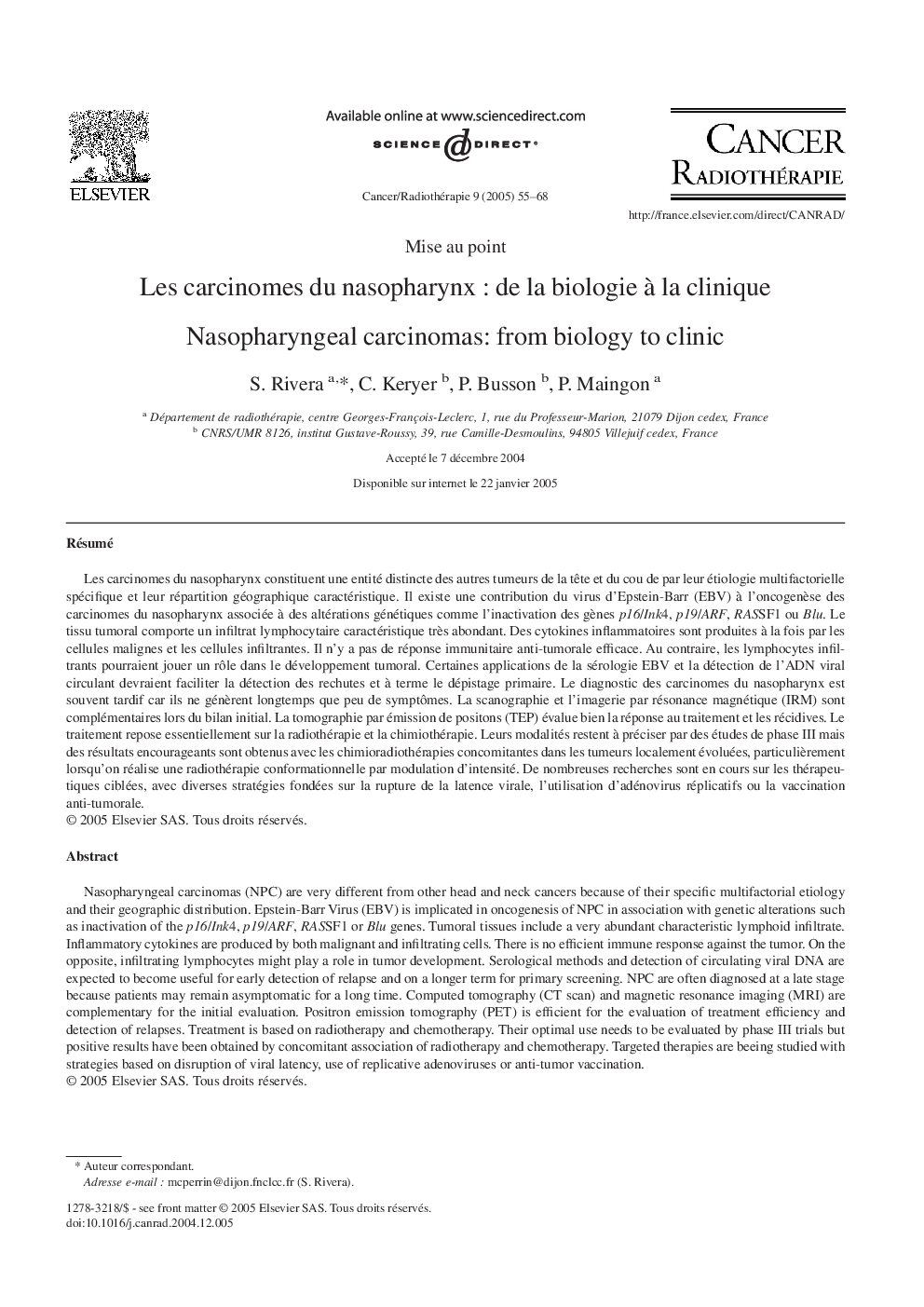| Article ID | Journal | Published Year | Pages | File Type |
|---|---|---|---|---|
| 10903100 | Cancer/Radiothérapie | 2005 | 14 Pages |
Abstract
Nasopharyngeal carcinomas (NPC) are very different from other head and neck cancers because of their specific multifactorial etiology and their geographic distribution. Epstein-Barr Virus (EBV) is implicated in oncogenesis of NPC in association with genetic alterations such as inactivation of the p16/Ink4, p19/ARF, RASSF1 or Blu genes. Tumoral tissues include a very abundant characteristic lymphoid infiltrate. Inflammatory cytokines are produced by both malignant and infiltrating cells. There is no efficient immune response against the tumor. On the opposite, infiltrating lymphocytes might play a role in tumor development. Serological methods and detection of circulating viral DNA are expected to become useful for early detection of relapse and on a longer term for primary screening. NPC are often diagnosed at a late stage because patients may remain asymptomatic for a long time. Computed tomography (CT scan) and magnetic resonance imaging (MRI) are complementary for the initial evaluation. Positron emission tomography (PET) is efficient for the evaluation of treatment efficiency and detection of relapses. Treatment is based on radiotherapy and chemotherapy. Their optimal use needs to be evaluated by phase III trials but positive results have been obtained by concomitant association of radiotherapy and chemotherapy. Targeted therapies are beeing studied with strategies based on disruption of viral latency, use of replicative adenoviruses or anti-tumor vaccination.
Keywords
Related Topics
Life Sciences
Biochemistry, Genetics and Molecular Biology
Cancer Research
Authors
S. Rivera, C. Keryer, P. Busson, P. Maingon,
